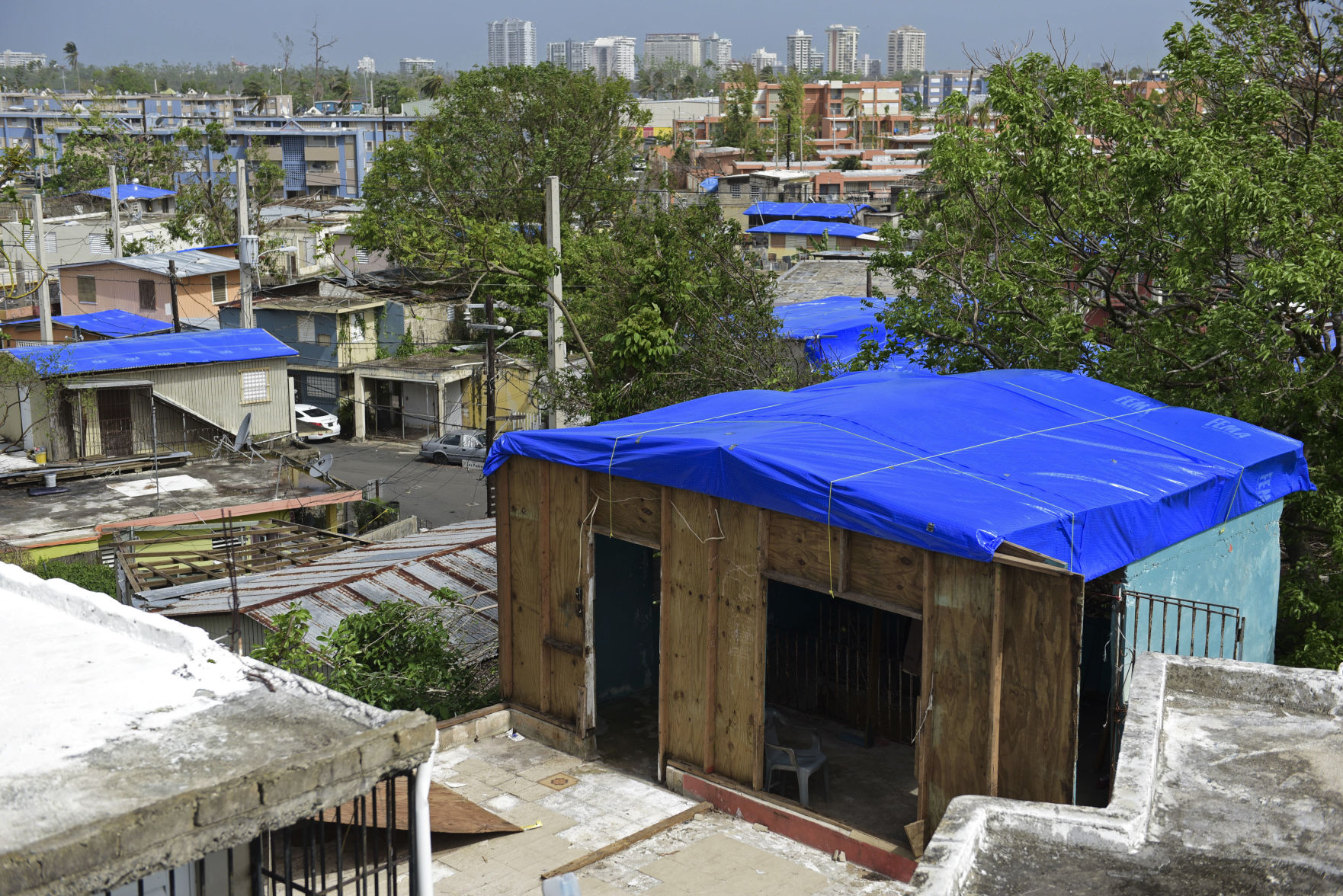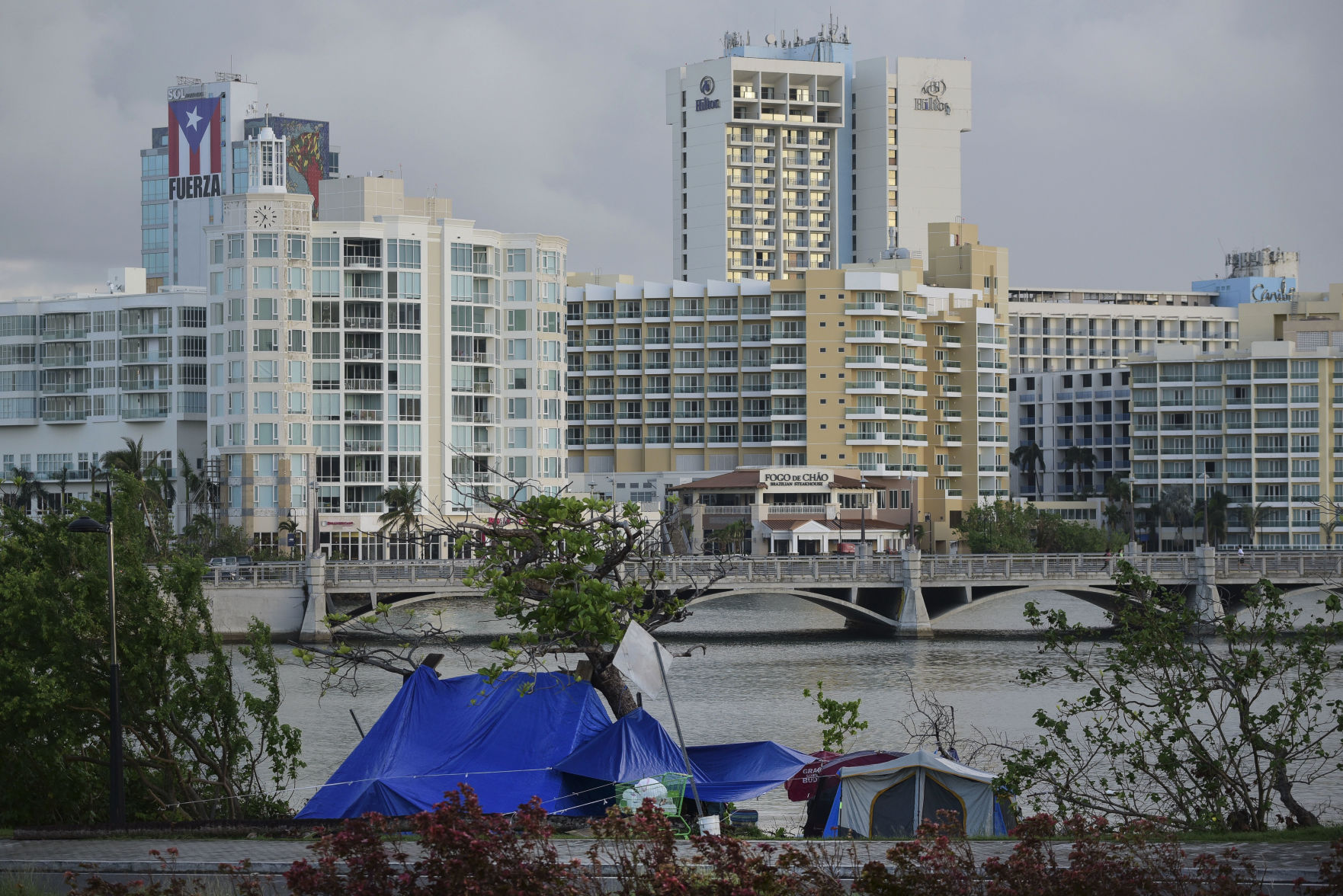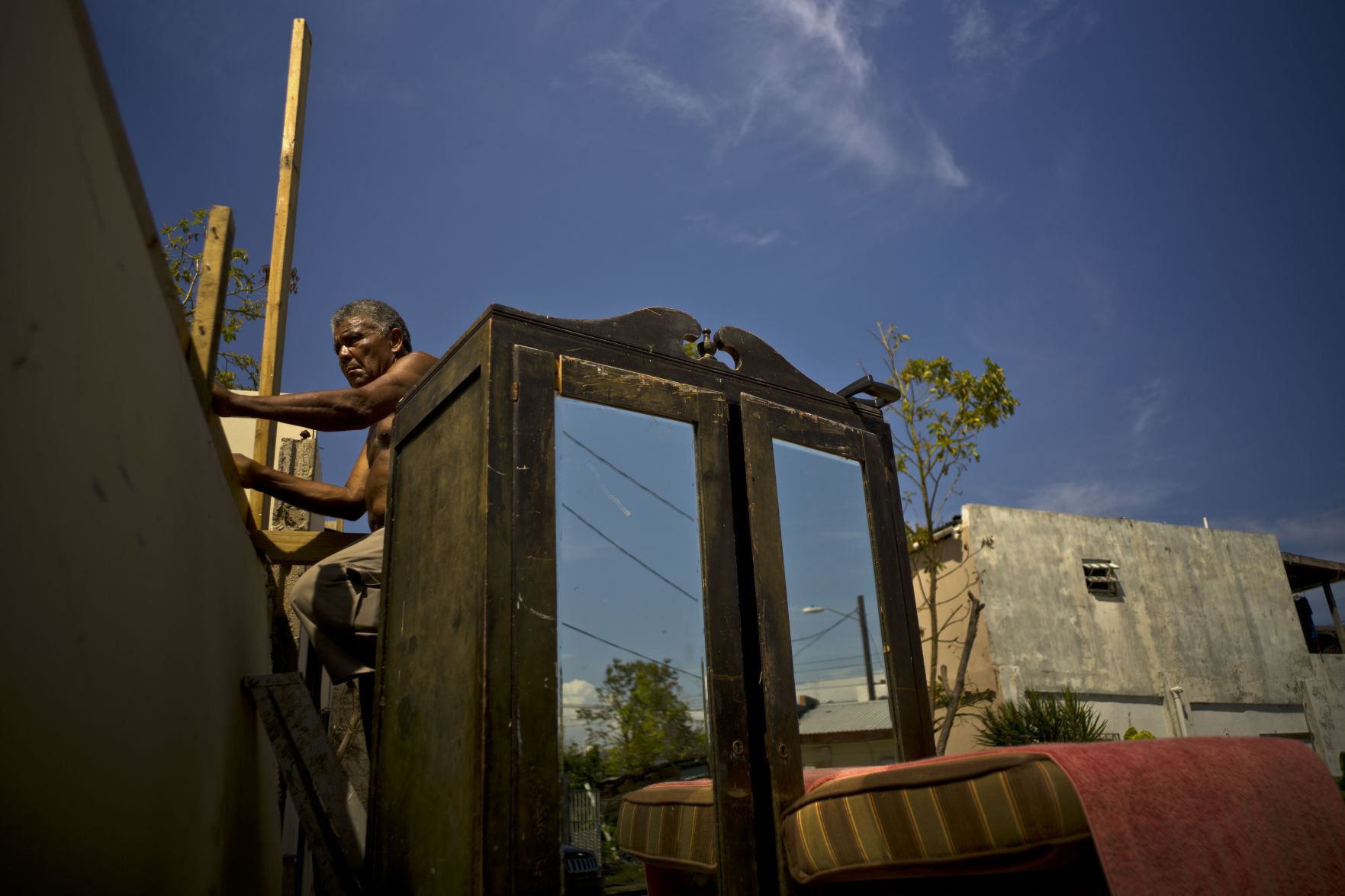VEGA BAJA, Puerto Rico (AP) — Hurricane Maria didn’t discriminate between rich and poor when it ravaged Puerto Rico, but the recovery has been another story. Much of Puerto Rico was still without power Wednesday, more than a month after
VEGA BAJA, Puerto Rico (AP) — Hurricane Maria didn’t discriminate between rich and poor when it ravaged Puerto Rico, but the recovery has been another story.
Much of Puerto Rico was still without power Wednesday, more than a month after the storm, but wealthier residents are sealed up in air conditioned homes with their generators and bottled water, or have fled the island altogether for extended vacations, while the poorest are left swatting mosquitoes in sweltering heat and trying to secure enough water.
“I have no money. I can’t hear very well. It’s too hard for me to try to go find another place so I am here waiting for my sister to find me,” said Efrain Diaz Figueroa, 70, who sleeps under a shard of tin on a damp mattress in the wreckage of his sister’s home, batting away swarms of mosquitoes in the punishing heat. A sign nearby reads: “Don’t rob us.”
Puerto Rico has some of the highest income inequality in the world, said Jose Caraballo, president of Puerto Rico Economists Association. More than 40 percent of the island lives below the poverty line, and tens of thousands are now out of work. Life for them is only getting worse.
“Maria just exacerbated the inequalities we were seeing in Puerto Rico, especially among those in the metropolitan area and those in the country,” he said.
The U.S. territory of 3.4 million people was already struggling with a more than decade-long recession before the storm, working to restructure a portion of its $73 billion public debt. The median annual income is $19,500, while in the rest of the U.S. it’s more than $58,000.
The line between poverty and the middle class was already blurring. More than a dozen families a day were losing homes to foreclosure. Unemployment was at 10 percent, nearly three times the rate in the mainland.
“And then Maria happened. And now those people are living like the homeless. They don’t have a roof, they don’t have water, they are caring about more basic things such as food,” Caraballo said.
The Category 4 storm was among the most devastating the U.S. territory has ever seen, killing more than 50 people. It ripped up giant trees, wiped out power to the entire island, demolished scores of homes and badly damaged thousands more. About 70 percent of people now have water, but still must boil it or treat it to make it safe to drink. Gov. Ricardo Rossello has pledged to get 95 percent of power back by Dec. 31; right now about 30 percent have electricity.
Some parts of the island feel practically normal: In upscale parts of San Juan, organic markets are stocked with cold, fresh produce and water, though some still limit the number of bottles you can buy. Generators whir outside restaurants and apartment buildings. Lights flicker on in the evenings among the high-rises. People walk their dogs on cleared streets, jog wearing expensive gym clothes in the early morning and go out for dinner in partially lit restaurants.
“We’re doing O.K., all things considered,” said Jesus Gonzalez, 43. Like many, the generator in his building runs during the evening, the cost of which is split among the tenants. They have access to laundry machines, so he doesn’t mind sweating at the gym.
When the generators broke at the home of Dr. Linette Perez in the upscale suburb of Guaynabo, she had her husband and son came to a luxury hotel for three days to get some relief. Her home suffered minor damage; her beach house was worse. The family is thinking of leaving for the states, like tens of thousands of others already have.
“The generator exploded because we used it so much,” she said as her 7-year-old Gustavo swam in a clear, cold pool. “We couldn’t get another right away big enough for the house so we came to relax.”
But life is increasingly desperate for others, especially outside of the city where it’s been more difficult for aid workers to reach families cut off by fallen bridges and mudslides. Hours are longer because they are washing clothes by hand, hunting for food and water and spending any free time cleaning up the wreckage of their homes.
Near Vega Baja, a mountain town about 25 miles (40 kilometers) west of San Juan, 63-year-old Dolores Gonzales still spends hours every day looking for water, driving along a treacherous stretch of mountain road obscured by downed trees and giant power poles. She’s collected rainwater, and uses nearby stream water for washing clothes, but she fears it.
“The close water is full of dead animals and debris,” she said. “I’m scared to use it to bathe. I don’t want an infection.”
Her grandson Emanuel Ramos has been out of work since the storm, and his family of four small children is staying with her in their leaky, moldy home.
“It’s impossible to find work right now. We’re living in the dark ages out here,” said Ramos, 27.
The government is the island’s biggest employer, while other major jobs are in manufacturing, primarily in pharmaceuticals, textiles and electronics. But modern business depends on power and communication networks.
In Caguas, businessman Ricky Canto has no power or potable water, and family members are staying at his home. But the 54-year-old has a portable distillery that cleans water from his pool and a massive generator that costs him upward of $500 a week. Canto, who drives a $250,000 silver Ferrari, can afford it. But he knows his workers can’t.
“We have to get the systems up and running soon,” he said. “People need to work.”
Some like Moises Valentin, 63, have been recycling cans to make ends meet, picking through mountains of stinking, rotten trash. He had so much damage to his roof that his small apartment was ruined. He wept as he stood among his destroyed belongings, piled high, as members of the U.S. Army Corps of Engineers built him a temporary roof.
“I did not feel poor until after Maria,” he said.




